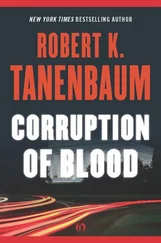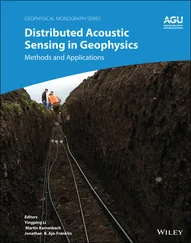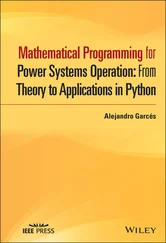An area in which this kind of multiprocessor differs appreciably from a network or distributed system is in the organization of the file system. The operating system normally contains a traditional file system, including a single, unified block cache. When any process executes a system call, a trap is made to the operating system, which carries it out, using semaphores, monitors, or something equivalent, to lock out other CPUs while critical sections are being executed or central tables are being accessed. In this way, when a WRITE system call is done, the central block cache is locked, the new data entered into the cache, and the lock released. Any subsequent READ call will see the new data, just as on a single-processor system. On the whole, the file system is hardly different from a single-processor file system. In fact, on some multiprocessors, one of the CPUs is dedicated to running the operating system; the other ones run user programs. This situation is undesirable, however, as the operating system machine is often a bottleneck. This point is discussed in detail by Boykin and Langerman (1990).
It should be clear that the methods used on the multiprocessor to achieve the appearance of a virtual uniprocessor are not applicable to machines that do not have shared memory. Centralized run queues and block only caches work when all CPUs have access to them with very low delay. Although these data structures could be simulated on a network of machines, the communication costs make this approach prohibitively expensive.
Figure 1-12 shows some of the differences between the three kinds of systems we have examined above.
| Item |
Network operating system |
Distributed operating system |
Multiprocessor operating system |
| Does it look like a virtual uniprocessor? |
No |
Yes |
Yes |
| Do all have to run the same operating system? |
No |
Yes |
Yes |
| How many copies of the operating system are there? |
N |
N |
1 |
| How is communication achieved? |
Shared files |
Messages |
Shared memory |
| Are agreed upon network protocols required? |
Yes |
Yes |
No |
| Is there a single run queue? |
No |
No |
Yes |
| Does file sharing have well-defined semantics? |
Usually no |
Yes |
Yes |
Fig. 1-12.Comparison of three different ways of organizing n CPUs.
In the preceding sections we have looked at distributed systems and related topics from both the hardware and software points of view. In the remainder of this chapter we will briefly look at some of the key design issues that people contemplating building a distributed operating system must deal with. We will come back to them in more detail later in the book.
Probably the single most important issue is how to achieve the single-system image. In other words, how do the system designers fool everyone into thinking that the collection of machines is simply an old-fashioned timesharing system? A system that realizes this goal is often said to be transparent.
Transparency can be achieved at two different levels. Easiest to do is to hide the distribution from the users. For example, when a UNIX user types make to recompile a large number of files in a directory, he need not be told that all the compilations are proceeding in parallel on different machines and are using a variety of file servers to do it. To him, the only thing that is unusual is that the performance of the system is halfway decent for a change. In terms of commands issued from the terminal and results displayed on the terminal, the distributed system can be made to look just like a single-processor system.
At a lower level, it is also possible, but harder, to make the system look transparent to programs. In other words, the system call interface can be designed so that the existence of multiple processors is not visible. Pulling the wool over the programmer's eyes is harder than pulling the wool over the terminal user's eyes, however.
What does transparency really mean? It is one of those slippery concepts that sounds reasonable but is more subtle than it at first appears. As an example, imagine a distributed system consisting of workstations each running some standard operating system. Normally, system services (e.g., reading files) are obtained by issuing a system call that traps to the kernel. In such a system, remote files should be accessed the same way. A system in which remote files are accessed by explicitly setting up a network connection to a remote server and then sending messages to it is not transparent because remote services are then being accessed differently than local ones. The programmer can tell that multiple machines are involved, and this is not allowed.
The concept of transparency can be applied to several aspects of a distributed system, as shown in Fig. 1-13. Location transparencyrefers to the fact that in a true distributed system, users cannot tell where hardware and software resources such as CPUs, printers, files, and data bases are located. The name of the resource must not secretly encode the location of the resource, so names like machine1:prog.c or / machine1/prog.c are not acceptable.
| Kind |
Meaning |
| Location transparency |
The users cannot tell where resources are located |
| Migration transparency |
Resources can move at will without changing their names |
| Replication transparency |
The users cannot tell how many copies exist |
| Concurrency transparency |
Multiple users can share resources automatically |
| Parallelism transparency |
Activities can happen in parallel without users knowing |
Fig. 1-13.Different kinds of transparency in a distributed system.
Migration transparencymeans that resources must be free to move from one location to another without having their names change. In the example of Fig. 1-10 we saw how server directories could be mounted in arbitrary places in the clients' directory hierarchy. Since a path like /work/news does not reveal the location of the server, it is location transparent. However, now suppose that the folks running the servers decide that reading network news really falls in the category "games" rather than in the category "work." Accordingly, they move news from server 2 to server 1. The next time client 1 boots and mounts the servers in his customary way, he will notice that /work/news no longer exists. Instead, there is a new entry, /games/news. Thus the mere fact that a file or directory has migrated from one server to another has forced it to acquire a new name because the system of remote mounts is not migration transparent.
If a distributed system has replication transparency, the operating system is free to make additional copies of files and other resources on its own without the users noticing. Clearly, in the previous example, automatic replication is impossible because the names and locations are so closely tied together. To see how replication transparency might be achievable, consider a collection of n servers logically connected to form a ring. Each server maintains the entire directory tree structure but holds only a subset of the files themselves. To read a file, a client sends a message containing the full path name to any of the servers. That server checks to see if it has the file. If so, it returns the data requested. If not, it forwards the request to the next server in the ring, which then repeats the algorithm. In this system, the servers can decide by themselves to replicate any file on any or all servers, without the users having to know about it. Such a scheme is replication transparent because it allows the system to make copies of heavily used files without the users even being aware that this is happening.
Читать дальше












